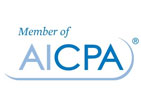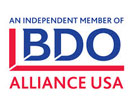 As we approach 2025, it is essential for businesses to stay updated on recent changes impacting payroll, benefits, and compensation. This year brings several key updates, including an increase in the IRS standard mileage rate for business use, adjustments to 401(k) contribution limits, and a significant legal decision affecting overtime regulations. Below, we break down these changes and their implications for your payroll operations.
As we approach 2025, it is essential for businesses to stay updated on recent changes impacting payroll, benefits, and compensation. This year brings several key updates, including an increase in the IRS standard mileage rate for business use, adjustments to 401(k) contribution limits, and a significant legal decision affecting overtime regulations. Below, we break down these changes and their implications for your payroll operations.
IRS Mileage Rate Increase
Effective January 1, 2025, the IRS has announced an increase in the standard mileage rate for business purposes. The rate will rise from sixty-seven cents per mile in 2024 to 70 cents per mile in 2025. This rate applies to all business-related travel, regardless of the vehicle type, including electric, hybrid, gasoline, and diesel-powered vehicles.
This rate change offers significant savings for businesses that reimburse employees for business-related mileage. Keeping track of mileage is essential for accurate reimbursement and tax deduction purposes, so it is important for companies to update their internal systems to reflect the new rate.
In addition to the business mileage rate, the IRS has adjusted other mileage reimbursement rates, which remain unchanged from 2024 for some uses:
• Medical purposes: The rate stays at 21 cents per mile, the same as in 2024.
• Moving expenses for qualified active-duty members of the Armed Forces Also remain at 21 cents per mile.
• Charitable purposes: The rate stays at 14 cents per mile, unchanged from 2024.
These rates apply across the board, whether employees are using personal or company vehicles for these specific purposes, and the rates should be factored into payroll calculations for proper reimbursement.
401(k) Contribution Limits Increase
For employees planning for retirement, the IRS has raised the contribution limits for 401(k), 403(b), and Simple IRA plans for 2025. The increase in contribution limits allows workers to save more for retirement while still benefiting from tax-deferred growth. Here is a breakdown of the changes:
• 401(k) and 403(b) Employee Contributions: The limit for employee contributions will increase by $500, bringing the maximum contribution to $23,500 in 2025. This is a notable increase for those looking to maximize their retirement savings, particularly those who are already contributing the maximum allowed.
• Catch-Up Contributions: While the contribution limit has increased, the catch-up contribution limit for individuals aged fifty and older will remain at $7,500 for 2025. This allows workers nearing retirement to continue building their savings with additional contributions. Importantly, for employees aged 60, 61, 62, and 63, a higher catch-up contribution limit will apply in 2025. Under the SECURE 2.0 Act, this higher limit is set at $11,250, up from the regular $7,500.
• Simple IRA Contributions: For 2025, the contribution limit for Simple IRAs will increase by $500 to $16,500. This change applies to employees who use a Simple IRA to save for retirement.
Employers should update payroll systems to reflect these new limits and ensure that they inform employees of the changes. As a result, employees can take advantage of the increased limits when planning their contributions for the new year.
Texas Federal Court Strikes Down DOL Overtime Rule
In a significant legal development, a Texas federal court ruled in November 2024 to strike down the Department of Labor’s (DOL) overtime rule. This ruling impacts the salary threshold for determining who qualifies for overtime pay under the Fair Labor Standards Act (FLSA).
As a result of the court’s ruling, the salary threshold has reverted to the lower level of $684 per week, which had been in effect under the DOL’s 2019 overtime rule. This means that employees earning less than this threshold must be paid overtime for hours worked over forty in a workweek. However, the increase in the salary threshold proposed by the DOL in 2024, which would have raised the threshold to $1,059 per week, will not take effect.
Employers should be aware of the potential impact of the lower salary threshold. This could cause employee conflicts if an employer chooses to amend some exemption statuses but not others with similar job duties/positions. It is important for businesses to audit their pay structures and adjust job classifications accordingly to ensure compliance with the updated threshold. Employers must also prioritize communicating reclassification or exemption statuses with the employees.
Conclusion
Staying compliant with changes to IRS mileage rates, retirement contribution limits, and labor laws is crucial for effective payroll management. As we move into 2025, businesses should prepare for the increase in the IRS standard mileage rate, update 401(k) and IRA contribution limits for employees, and adjust payroll practices to reflect the recent court ruling on overtime pay. By staying initiative-taking and informed, employers can ensure that they are offering competitive benefits while maintaining compliance with all relevant regulations.
If you need assistance with any of these changes, from mileage rate tracking to 401(k) adjustments or overtime compliance, our payroll services are here to help. Reach out today to ensure your business is ready for the upcoming year.
For more information on the above article or any human resource management services, please contact Katelyn Parks at (334) 321-4729 or by leaving us a message below.
Copyright 2025







